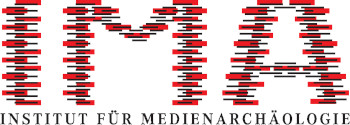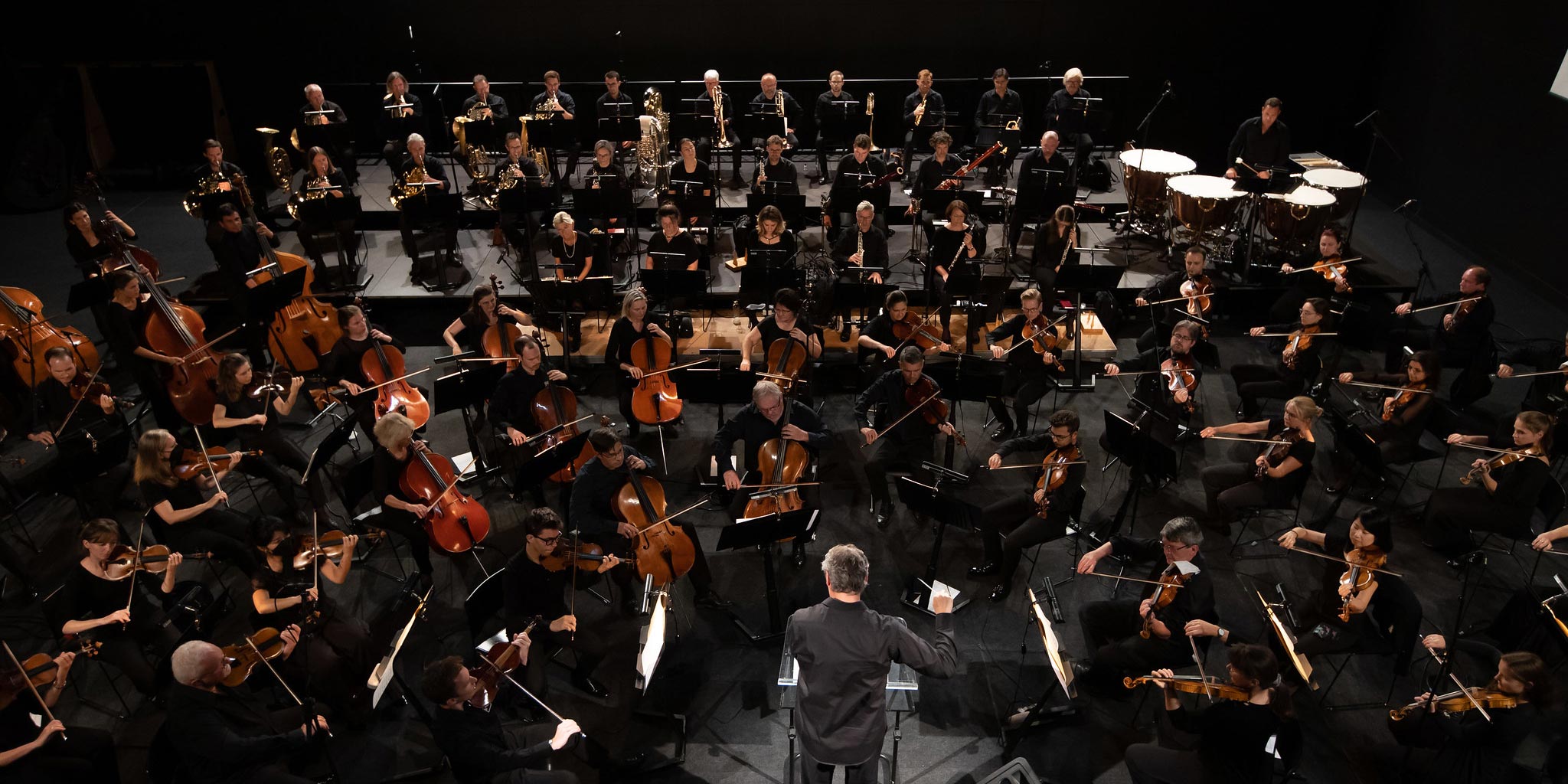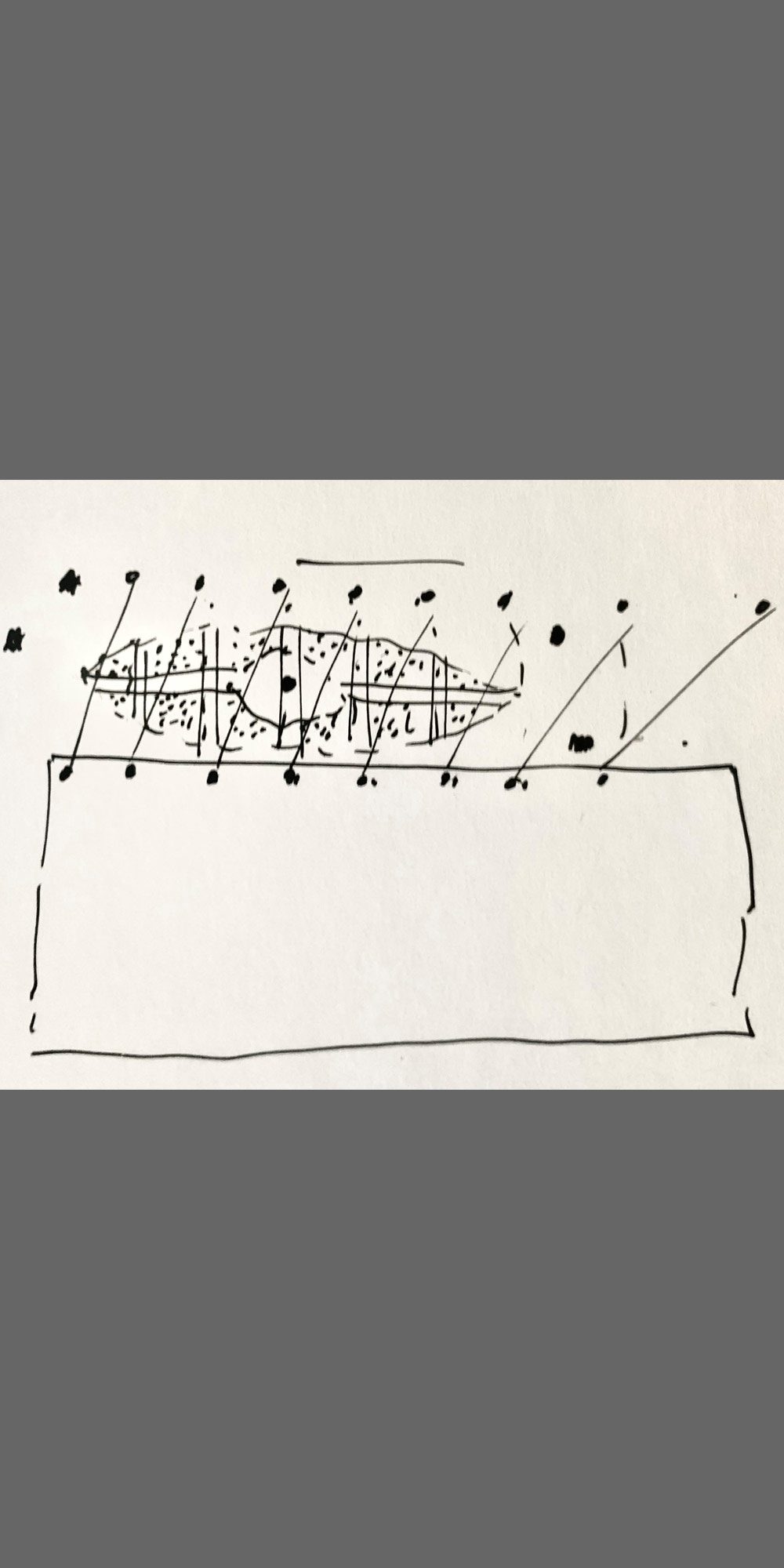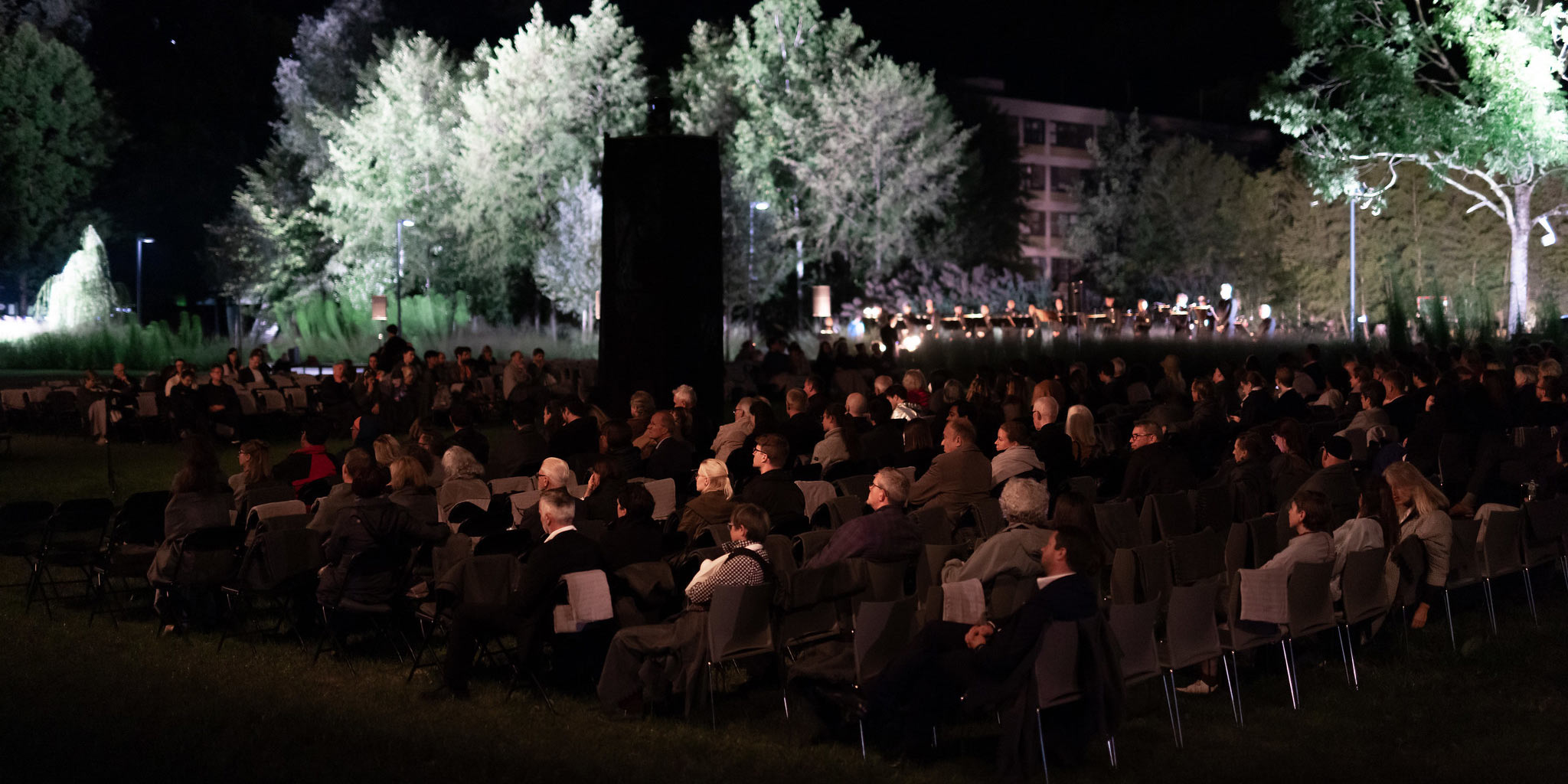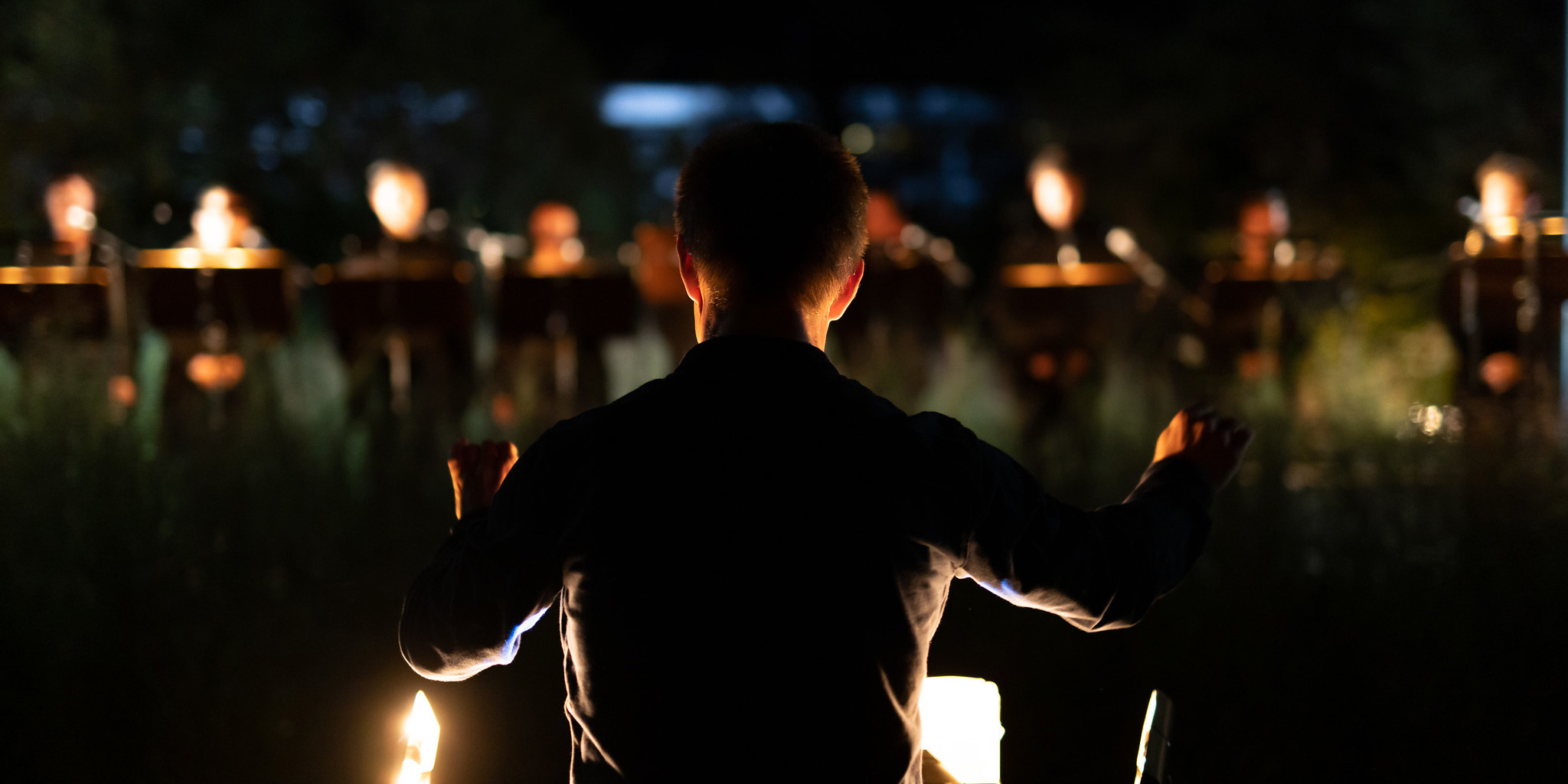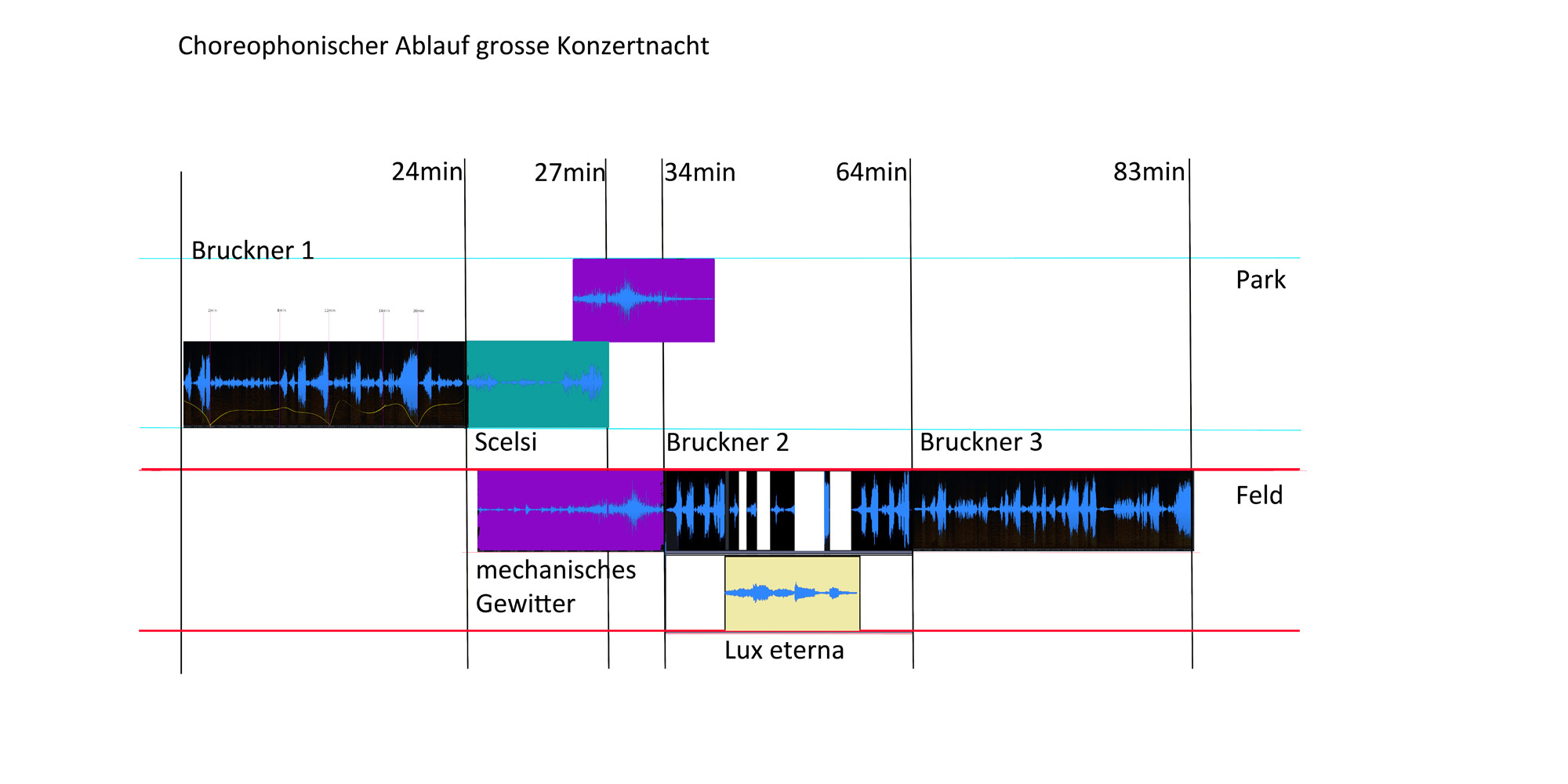Once again, Ars Electronica’s Big Concert Night goes on a grand voyage of discovery. After exploring the world of robotics and AI, encountering digital images and engaging with dance and theater, the focus this year is on the core of all music: the acoustic basis for sound and the space that sound can create. On the one hand, we examine the physical space that sound waves traverse and create, but of course we will also explore the metaphysical multidimensions that sound opens up in the process of becoming music.
What could be better suited for this than the music of Anton Bruckner played by the Bruckner Orchestra, which has accompanied Ars Electronica’s musical and technological explorations since 2003? Anton Bruckner’s 9th Symphony, conducted by Markus Poschner, will be the central piece of this evening and will be joined by the exceptional choral piece Lux Aeterna by György Ligeti, performed by the Company of Music under Johannes Hiemetsberger.
But this is only the beginning, because you will not only hear Bruckner’s Ninth played by the orchestra: Bruckner’s timbres and sound structures will also be picked up by a large number of microphones and handed over to the extraordinary sound artist and sound space virtuoso Andres Bosshard, who will project them into the scenic park of the JKU campus, around the new Keplerhall, via more than 20 sound channels and loudspeaker systems. The special technical setup has been designed by Karl Schmidigner, Joschi Viteka and Hannes Franks.
The orchestra plays in the Keplerhall, the audience sits and strolls in the park, the sounds move along mighty treetops, multiply our spatial perception and give the wandering listeners an inkling of infinity. Isolated moments of physical sound condense in it, illuminating the sky like a big bang creating space. This experience is completely in the spirit of Bruckner’s music, with its physical power and its spiritual dimension.
In a transition conceived by Poschner and Hiemetsberger, the Ninth meets Ligeti’s Lux Aeterna, making a kind of leap through space and time — audible in a gathering mechanical thunderstorm of echo rolls and flashes of the afterglow of the end of the 19th century, the time of industrial machines, to the 1960s, the dawn of the computer age and the time of the first space expeditions — to assure us once again of the timelessness of musical visionary power.
A prelude and an intermezzo take us to choral pieces by Giacinto Scelsi and further into the sonic environments dedicated to different female pioneers of Sound Art curated by Elisabeth Schimana.
Credits
Sonitus Aeternus – the Bruckner 9 Project
Orchestra: Bruckner Orchestra Linz,
Principal conductor: Markus Poschner
Company of Music conducted by Johannes Hiemetsberger
Prelude: Elisabeth Schimana
Music from the IMA Archive selected by Elisabeth Schimana.
Works for mechanical sound machines by Andrea Sodomka,
Pia Palme and Gina Mattiello as well as tape pieces
from the late 60s by Beatriz Ferreyra.
Sound admiral: Andres Bosshard
Videorecording: Julian P. Schmiederer, Gregor Franz, Thomas Guggenberger, Leo Breid, Armin Seidl
Sound and light: Joschi Viteka
Production: Hannes Franks, Alexandra Röck
RESCUE – Post-industrial Dynamics
Rupert Huber, Zahra Mani, Balázs Pándi, Mia Zabelka
Further musical contributions: Rubin Khodeli, Ali Nikrang and Rupert Huber

